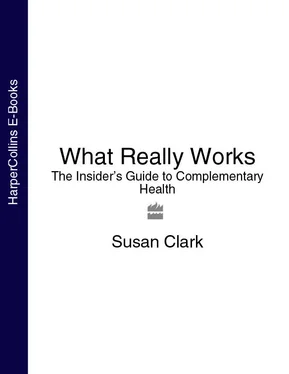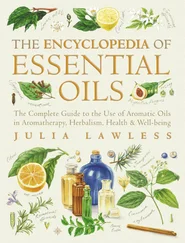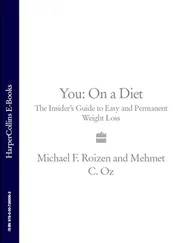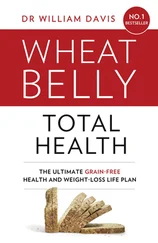Aiming for eight portions is easier said than done, of course, since most people hate chomping their way through what are laughingly called ‘health foods’. Maybe not so funny, since, as this term implies, so many foods are not healthy at all. In fact, if you do give in to a junk diet and spend years eating these more popular but nutritionally-starved foods, then far from nourishing you, they will eventually make you sick.
If you are in any doubt that the food on your plate really can affect your health, reflect on this: in Japan, where the diet is rich in substances called phytochemicals, especially soya, 25% fewer women succumb to breast cancer than in the West. Men, too, benefit from these nutrients, because while the rates of prostate cancer in the East and the West are similar, far fewer Japanese men will actually die of the disease.
Conversely, cancer rates among East Asians who migrate and adopt Western diets mimic those of the Western world, within a shockingly short period of time.
Cheat Your Way to Better Health
Juicing is the ultimate cheat to better health. It’s the quickest way to get live enzymes straight into the stomach and bloodstream, and is also the fast-track way to eat those eight portions of raw fruit and vegetables without getting jaw ache. Think about it: You need to juice about 16 medium-sized carrots to make a glass of carrot juice for breakfast. Despite the fact that carrots are a superb source of antioxidant compounds called monoterpenes and betacarotenes, which help protect against killer cancers and heart disease if eaten regularly, you probably don’t eat half that number in a week.
Juicing used to be as dull as ditchwater, but there are now lots of excellent and inspiring new juicing books (see the Bibliography), so if, after a few weeks of juice therapy, you’re still stuck with carrot and celery, you will only have yourself to blame.
You can juice, blend and pulp any vegetable, fruit or seed you care to name. Can’t face grinding your way through a bowl of selenium-rich prostate-protecting brazil nuts? Make a nut milk instead. Nut milks are an excellent alternative to dairy, especially for kids who have allergies to milk but who can tolerate nuts. Since nuts are also rich in the essential fatty acids (especially omega-3s) which work in the body to dislodge stored fat, they can even help with weight loss and tackle unsightly cellulite.
You can buy a decent standard juicer for less than £50, but if you’re serious about juicing or if you suffer from any of the digestive disorders detailed later in this book (see Top-to-Toe) and which mean you should be aiming for a 70% raw food diet, then The Champion Juicer is the one all the professionals use. It’s actually quite sleek-looking and not too bad to clean. It can pulp, mash and grind, and while it is not cheap, it is a reliable workhorse that will not let you down.
Eat with the Seasons
Eating with the seasons not only means you are getting your food fresh, it also brings real health benefits. Fresh young spring greens, for example, help cleanse and detoxify your system after the stagnation of winter. Warm, nourishing root vegetables sustain the body through the colder months of winter, and in the summer, light salads and juicy ripe fruits will keep energy levels high and the body hydrated.
Why Are You Still Eating Meat?
At the risk of upsetting meat-producers everywhere, I have to report that whenever I analyse the nutrutional content of any meat recipe, I find it hard to justify it’s place in any health book … including my Vitality Cookbook! Most meat contains cholesterol-raising hidden saturated fats and, unless you buy organic, it’s quite likely to contain more than lingering traces of the antibiotics animals are pumped full of to promote faster growth and higher profit margins.
There are lots of reasons to stop eating meat. Buddhists and Hindus, for example, believe that when you eat meat you lower your spiritual vibrations, and that with every mouthful you swallow the terrifying death screams of the animal which at it’s slaughter, often at the hand of someone it trusted to feed and nurture it, seeps into the memory of the muscle tissues.
If that’s too far out for you and you don’t, in any event, object to meat on a soul level, then think about your physical health. Vegetarians are three times less likely to have a heart attack or a stroke than meat-eaters. They have a 40% lower incidence of cancer and are less likely to suffer from arthritis, obesity, diet-related diabetes, constipation, gallstones, hypertension and many other ailments.
If you don’t care about your health, what about your figure? When did you last see a fat tree or a fat vegetarian? Neither of these depends on meat for survival, and nor do we. The inner lining of the human colon is pocketed to slow down digestion. This, according to nutritional anthropologists, suggests that our natural diet should be one of fruit and vegetables. The inner surface of the colon of a canine animal like the dog is smooth and unpocketed for fast transit and the digestion of meat.
Meat that stays in the gut rots in the gut and can cause additional problems including diverticulosis and bad breath. Think what a piece of meat would look and smell like if you left it on the worktop in the kitchen for four days. US researchers reckon that, on average, there’s eight pounds of undigested, putrefying meat in the intestines of an adult American.
Still dying for that medium rare steak?
When and How to Eat
If you are eating the right foods – and, just as importantly, at the right times – you should be able to eat as much as you like, when you like. Digesting food, converting it to energy that the body can use and eliminating waste takes an astonishing 80% of your total energy reserves. No wonder, then, that so many people who have irregular mealtimes, impaired digestion and no time to prepare good food for themselves feel tired all the time – the amount of energy they are spending on the whole process must be even higher.
Smaller, more frequent meals make less of a demand on your digestive tract than one or two large and late-night meals. Adopt a ‘nil by mouth’ policy after 5 p.m., and any excess weight you carry will naturally drop off.
The French, of course, savour their meal times and you would never catch them wolfing their way through some gastronomic delight with eyes glued to the TV. The way we eat our food is just as important as what we eat, and the guidelines I like to follow, whenever possible, are those put forward by Ayurvedic practitioners, who take their inspiration from India. (For a full explanation of Ayurveda – or the ancient Indian ‘science of life’ – see page 272).
One simple but highly effective tip from these practitioners, especially for those of you suffering digestive disorders, is to make and drink a special ginger pickle 30 minutes before each meal. The pickle, a combination of honey, freshly grated root ginger and lemon juice, together with a pinch of salt, all dissolved in warm water, does not taste as bad as it sounds. In fact it has a warming quality and, I can promise you, it definitely works.
Other healthy eating tips from the older healing traditions include leaving the table when you are three-quarters full (this is customary in yoga traditions); replacing your cutlery on the plate between mouthfuls to slow the rate at which you eat, avoiding all gassy or fizzy drinks and taking a short walk to help ease digestion after each meal.
The most important thing is to make time for the food you have prepared, and that means setting the table and sitting down to eat. Even when you are alone. Eating on the hoof may be tempting when you are in a rush but you will, eventually, pay for this bad habit with a disruption to your digestion.
Читать дальше












